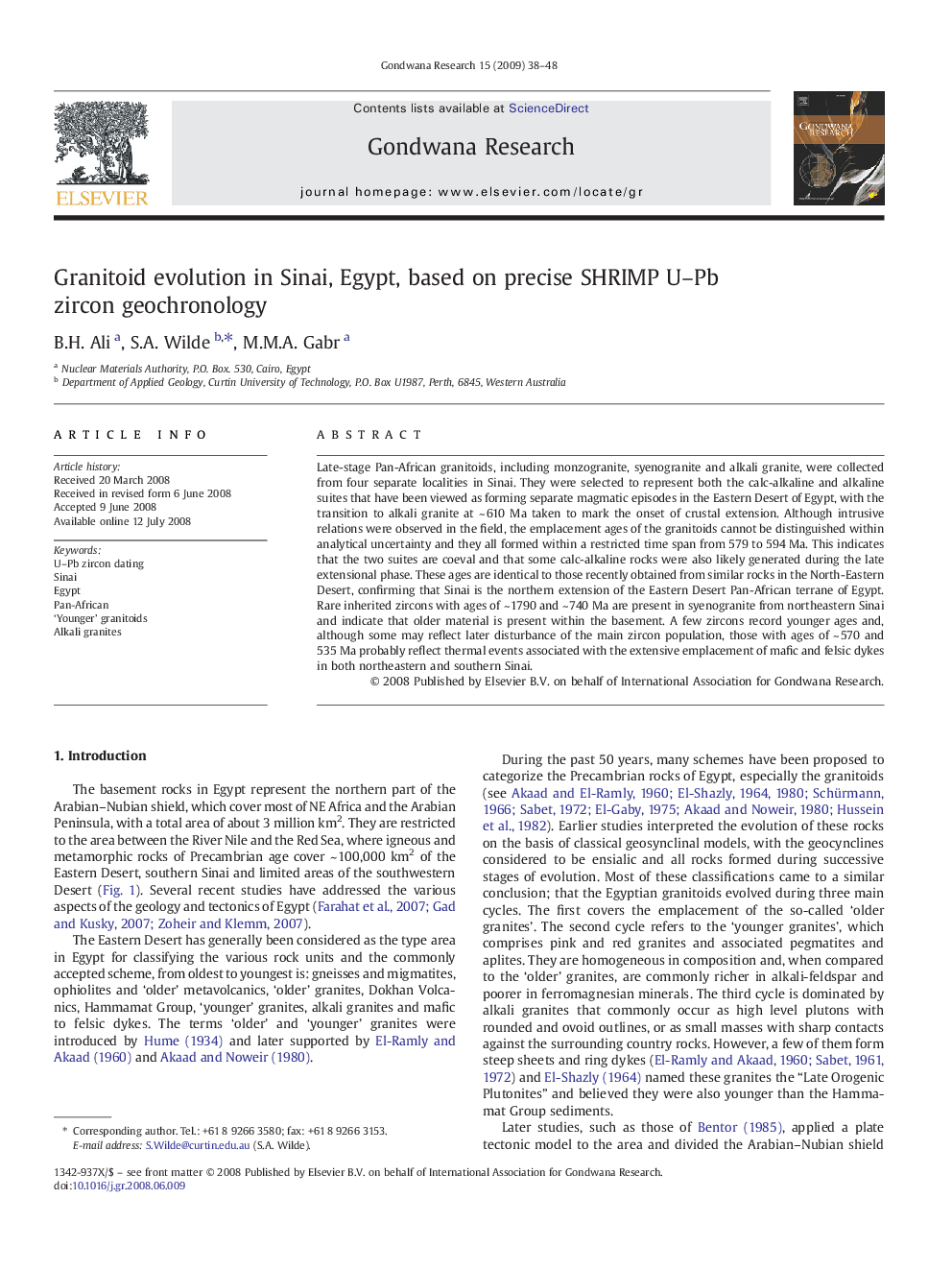| Article ID | Journal | Published Year | Pages | File Type |
|---|---|---|---|---|
| 4727928 | Gondwana Research | 2009 | 11 Pages |
Abstract
Late-stage Pan-African granitoids, including monzogranite, syenogranite and alkali granite, were collected from four separate localities in Sinai. They were selected to represent both the calc-alkaline and alkaline suites that have been viewed as forming separate magmatic episodes in the Eastern Desert of Egypt, with the transition to alkali granite at ~Â 610Â Ma taken to mark the onset of crustal extension. Although intrusive relations were observed in the field, the emplacement ages of the granitoids cannot be distinguished within analytical uncertainty and they all formed within a restricted time span from 579 to 594Â Ma. This indicates that the two suites are coeval and that some calc-alkaline rocks were also likely generated during the late extensional phase. These ages are identical to those recently obtained from similar rocks in the North-Eastern Desert, confirming that Sinai is the northern extension of the Eastern Desert Pan-African terrane of Egypt. Rare inherited zircons with ages of ~Â 1790 and ~Â 740Â Ma are present in syenogranite from northeastern Sinai and indicate that older material is present within the basement. A few zircons record younger ages and, although some may reflect later disturbance of the main zircon population, those with ages of ~Â 570 and 535Â Ma probably reflect thermal events associated with the extensive emplacement of mafic and felsic dykes in both northeastern and southern Sinai.
Related Topics
Physical Sciences and Engineering
Earth and Planetary Sciences
Geology
Authors
B.H. Ali, S.A. Wilde, M.M.A. Gabr,
